Death in the Privy (or, Strange Things Done in Sleep)
Tags: Anthony Wood, Denmark, Editions, History of Medicine, History of Scholarship, John Wallis, Latrines, Oxford, Royal Society, Seventeenth Century, Sleep, Suicide

As I finalise annotations for Volume IV of The Correspondence of John Wallis (OUP), I encountered afresh one of the more curious letters in the corpus (pdf). In characteristic fashion for Wallis, the missive – written to Henry Oldenburg in April 1674 and read aloud at the Royal Society – concerns lofty topics, including Robert Hooke’s efforts to measure stellar parallax and thus to provide incontrovertible proof of the motion of the Earth. However, at the end of the letter, we find a rather more tragic story on a very human scale.
Wallis relates the tale of two young Danish scholars, the brothers Peter and Martin Rosenstand, who had resided in Oxford since late 1672 in the lodging house of a Mrs Mumford near the Sheldonian Theatre (Peter, incidentally, was the letter’s bearer). The pair rapidly gained a reputation throughout the city for combining impeccable scholarship, good manners, and sparkling wit; they were ‘civil persons, studious and good scholars’, according to Wallis, whose ‘commendable and ingenuous conversation’ had won them ‘acquaintance with persons of the best quality’. However, these halcyon days were not to last, for Wallis reports an ‘astonishing accident’ which took place the previous Candlemas Day (2 February). Martin, the elder brother at age twenty, ‘was found in the House of office, some distance from the house… he lay in, dead’, with severe contusions to the neck. Although his injuries were consistent with hanging, Wallis could not believe that such a dazzling young man could commit such a heinous act as ending his own life – suicide was a serious crime in early modern England – and so floated the theory to Oldenburg that Martin had ‘in his sleep, or dream, hanged himself… it is not accountable how it should be otherwise’. This consoling explanation was apparently widely shared by seventeenth-century Oxford’s great and good as news of the ignoble death of a rising star sent shockwaves through the quads: ‘It hath occasioned many discourses… and many stories of strange things done in sleep’.
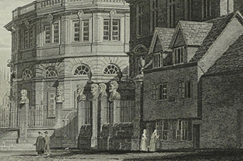
The Sheldonian Theatre, in the vicinity of which the Rosenstands lodged
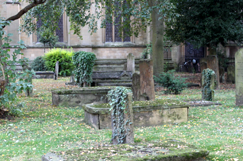
The yard of St Mary Magdalen parish church in St Giles
This ‘favourable’ view (in Wallis’s terms) was not, however, subscribed to by the Oxford antiquarian Anthony Wood, who provided a graphic account of the incident in his memoirs, the Life and Times (Volume II, pp. 280-1). While confirming Wallis’s claim that the siblings were ‘both the civilest men that ever came into that house [Mrs Mumford’s]’ (adding that Martin Rosenstand was ‘apt to blush’), for Wood the latter’s untimely passing was not a tragic misadventure but a willful act of self-destruction: ‘He rose up about four, struck fier, put off his shirt, went down naked (with his cote, loynings, hose and shoes in his armes), and so with the candle in his hand to the privy house, where (though I myself can just stand up in it) [he] hanged himself with his cravet, which came across his neck twice, upon a little rafter that went cross the house’. Moreover, in Wood’s version of events, Peter Rosenstand meddled with the scene in order to conceal his older brother’s actions: ‘His brother rising… went down to the privy house, and found him [Martin] stark naked hanging, tooke him downe and covered his privities with his coat, strived to conceal his death viz reporting that he died at his business’. This intervention notwithstanding, a surgeon ‘found that by his neck he had hanged himself’.
Whether Martin Rosenstand’s self-inflicted demise in a lavatory on a cold February morning in 1674 was deliberate or not, University coroner William Hopkins and his attending jury agreed with Wallis and the rest of Oxford’s learned community: the young Scandinavian had ‘hanged himself in his sleep… he dreamed of it, and so hanged himself’ (a verdict Wood deemed ‘doubtfull’). With the accidental nature of the death officially confirmed, Martin’s corpse was interred in the graveyard of St Mary Magdalen parish church at the southern end of St Giles at ten o’clock the following night, ‘close under the wall next to the stile or passage’ (church burials were denied to victims of suicide). Perhaps tellingly, ‘nobody [was] present but the carriers and clerk of the parish’…

 In commemoration of the 300th anniversary of the death of
In commemoration of the 300th anniversary of the death of 



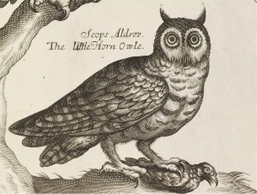





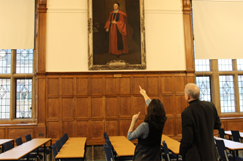
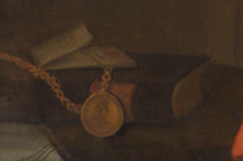

 Join
Join 